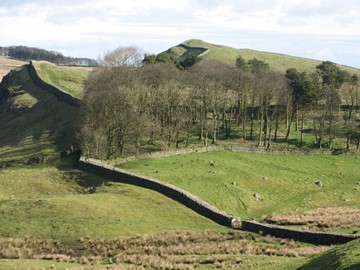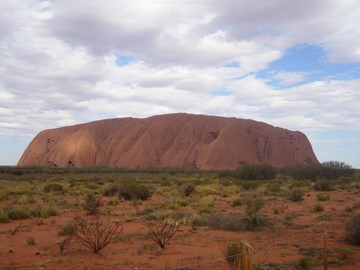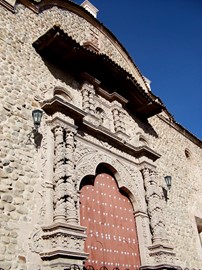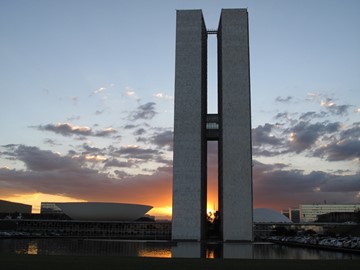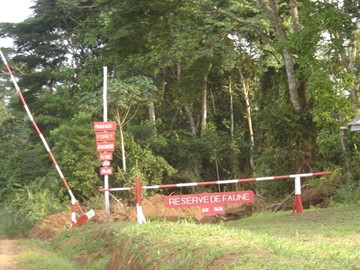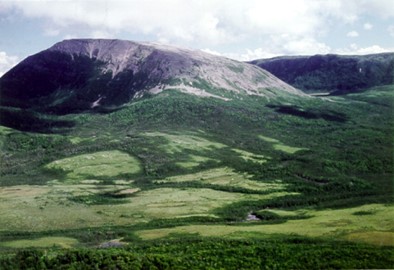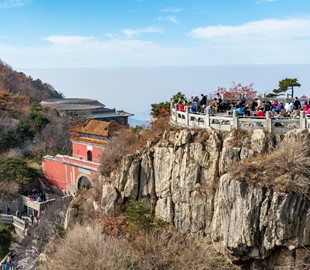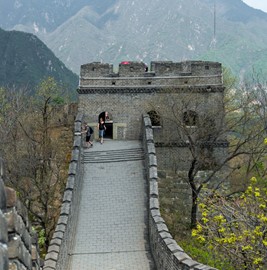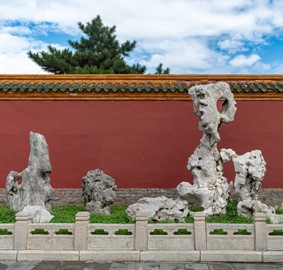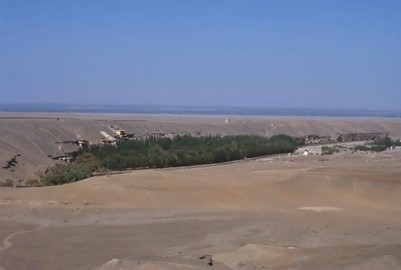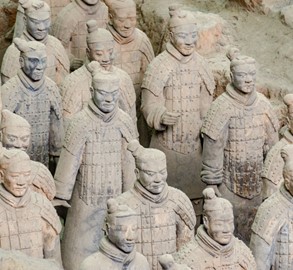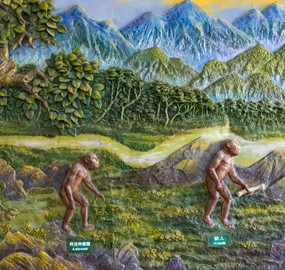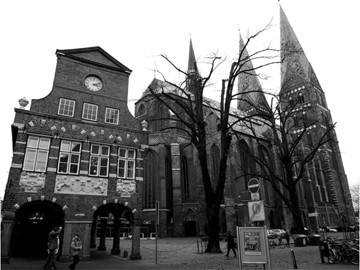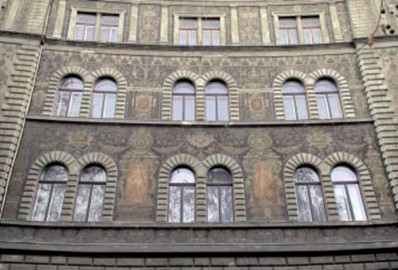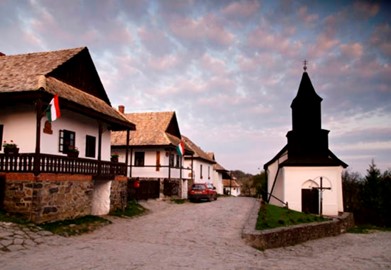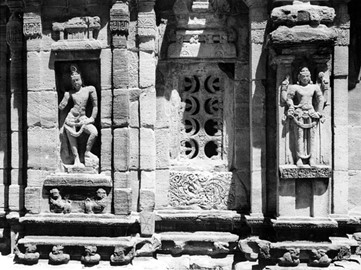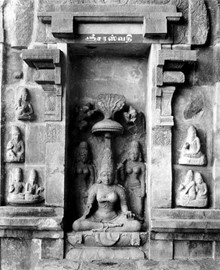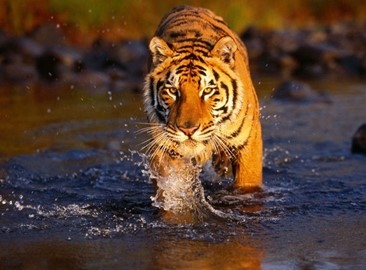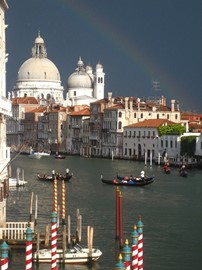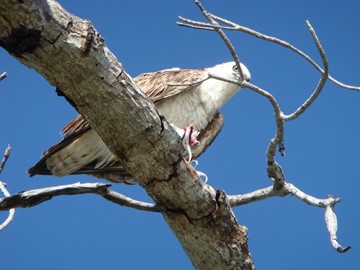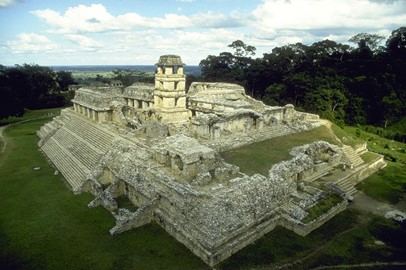year :: 1987
Frontiers of the Roman Empire
The Frontiers of the Roman Empire, a UNESCO World Heritage site in Europe, recognized in phases from 1987 to 2021, spans sites in Germany, the UK, Austria, and Slovakia, tracing the Roman Empire’s northern boundaries from the 1st to 5th centuries CE. Featuring Hadrian’s Wall, the Antonine Wall, and the Upper German-Raetian Limes, these fortifications, forts, and settlements reflect Rome’s military engineering and cultural reach. This transnational site showcases Europe’s ancient heritage, preserving a vast ... Read More
Uluru
Uluru, a UNESCO World Heritage site in Australia, is an iconic sandstone monolith revered for its cultural and natural significance. Rising dramatically from the arid landscape, its striking red hue shifts with the light, captivating visitors. Sacred to the Anangu people, it holds deep spiritual importance, adorned with ancient rock art and stories of creation. Surrounded by desert flora and fauna, Uluru’s geological uniqueness and timeless beauty make it a global symbol of Australia’s Indigenous heritage a... Read More
Potosí
The City of Potosí, a UNESCO World Heritage site in Bolivia, is a historic colonial city famed for its role in silver mining during the Spanish Empire. Established in 1545, it features grand churches, colonial architecture, and the Cerro Rico mine, which fueled global economies for centuries. Recognized by UNESCO in 1987, it showcases a blend of indigenous and European influences amid a dramatic landscape. The city stands as a testament to Bolivia’s mining history and colonial past.
Brasilia
Brasilia, a UNESCO World Heritage site in Brazil, is a modernist capital city celebrated for its innovative urban planning and architecture. Designed in the 1950s by Oscar Niemeyer and Lúcio Costa, it features bold, futuristic buildings like the Cathedral and National Congress, laid out in a unique airplane-shaped grid. Inscribed by UNESCO in 1987, it represents a landmark in 20th-century design. Brasilia stands as a symbol of Brazil’s architectural ambition and urban vision.
Dja Faunal
Dja Faunal Reserve, a UNESCO World Heritage site in Cameroon, is a vast, pristine rainforest teeming with biodiversity. Home to endangered species like forest elephants, gorillas, and chimpanzees, it remains largely untouched by human activity, preserving one of Central Africa’s most intact ecosystems. Recognized for its ecological importance, it stands as a critical sanctuary for wildlife and a testament to the region’s natural heritage.
Gros Morne
Gros Morne National Park, a UNESCO World Heritage site in Canada, is a geological marvel showcasing ancient continental drift and tectonic wonders. Its dramatic fjords, barren Tablelands, and diverse ecosystems highlight Earth’s history, from exposed mantle rock to glacial-carved landscapes. Recognized for its scientific and scenic significance, it stands as a striking testament to nature’s raw power and beauty.
Mount Taishan
Mount Taishan, a UNESCO World Heritage site in China, is a sacred peak revered for over 3,000 years as a site of imperial worship and cultural significance. Its rugged slopes, dotted with ancient temples, stone inscriptions, and stairways, reflect its role as a spiritual and artistic hub in Chinese history. Recognized for its natural and cultural value, it stands as a symbol of harmony between humanity and nature.
Great Wall
The Great Wall, a UNESCO World Heritage site in China, is an iconic fortification stretching thousands of kilometers, built from the 7th century BCE to the 16th century. Designed to protect against invasions, its watchtowers, battlements, and stone-and-brick construction showcase ancient Chinese engineering and military strategy. Recognized for its historical and architectural significance, it stands as a monumental symbol of resilience and ingenuity.
Imperial Palaces
The Imperial Palaces, a UNESCO World Heritage site in China, encompass the Forbidden City and Mukden Palace, grand residences of the Ming and Qing dynasties from the 14th to 20th centuries. These sprawling complexes, with their ornate halls, courtyards, and intricate designs, reflect imperial power, Confucian ideals, and architectural mastery. Recognized for their historical and cultural significance, they stand as enduring symbols of China’s dynastic legacy.
Mogao Caves
The Mogao Caves, a UNESCO World Heritage site in China, are a network of 492 Buddhist cave temples carved into a desert cliff from the 4th to 14th centuries. Adorned with vibrant murals and intricate statues, they represent a millennium of art, religion, and cultural exchange along the Silk Road. Recognized for their historical and artistic value, they stand as a treasure of ancient Buddhist heritage.
Mausoleum of the First Qin Emperor
The Mausoleum of the First Qin Emperor, a UNESCO World Heritage site in China, is a vast 3rd-century BCE burial complex famed for its Terracotta Army. This underground marvel, with thousands of life-sized clay soldiers, horses, and chariots, reflects the emperor’s quest for immortality and ancient Chinese craftsmanship. Recognized for its historical and archaeological significance, it stands as a monumental testament to imperial ambition.
Peking Man
Peking Man, a UNESCO World Heritage site in China, is an archaeological site preserving fossils of Homo erectus from 700,000 to 200,000 years ago. Discovered in a cave system, these remains, alongside stone tools and evidence of fire use, offer crucial insights into early human evolution in East Asia. Recognized for its scientific significance, it stands as a key record of prehistoric life.
Lubeck
The Hanseatic City of Lübeck, a UNESCO World Heritage site in Germany, is renowned for its well-preserved medieval architecture and historical significance as a key trading hub of the Hanseatic League. Founded in the 12th century, it boasts landmarks like the iconic Holstentor gate, the stunning Lübeck Cathedral, and the charming old town with its brick Gothic buildings. Its cultural and architectural legacy reflects its past prominence as a center of maritime commerce in Northern Europe. Today, Lübeck rema... Read More
Delphi
Delphi, a UNESCO World Heritage site in Greece, is an ancient archaeological treasure renowned for its historical and cultural significance. Once a major religious sanctuary, it housed the famous Oracle of Delphi, where priestesses delivered prophetic messages from the god Apollo. The site features well-preserved ruins, including the Temple of Apollo, an ancient theater, and a stadium, reflecting its past as a center for worship and athletic events. Its stunning natural setting enhances its allure, making i... Read More
Acropolis
The Acropolis, a UNESCO World Heritage site in Greece, is an ancient citadel perched atop a rocky hill, renowned for its historical and architectural significance. Constructed primarily in the 5th century BCE, it houses iconic structures like the Parthenon, a temple dedicated to Athena, showcasing classical Greek art and engineering. The site served as a political and religious center in antiquity, reflecting the power and culture of ancient Athens. Today, it stands as a global symbol of democracy and Weste... Read More
Budapest
Budapest, a UNESCO World Heritage site in Hungary, is renowned for its stunning architecture, rich history, and vibrant culture. The city seamlessly blends the historic charm of Buda, with its medieval castle and cobblestone streets, and the bustling energy of Pest, home to grand boulevards and the iconic Parliament building. Highlights include the thermal baths, a legacy of Roman and Ottoman influences, and the picturesque Danube River, spanned by elegant bridges like the Chain Bridge. Budapest offers a ca... Read More
Hollóko
Hollókő, a UNESCO World Heritage site in Hungary, is a well-preserved traditional village showcasing the country’s rural life and architecture. Known for its unique Palóc culture, the village features 17th- and 18th-century houses with whitewashed walls and wooden porches, reflecting historical building techniques. Its cobblestone streets and vibrant folk traditions, including annual festivals, draw visitors seeking an authentic glimpse into Hungary’s past. The site’s designation highlights its global cultu... Read More
Pattadakal
Pattadakal, a UNESCO World Heritage site in India, is renowned for its exquisite group of 8th-century monuments showcasing a fusion of North and South Indian architectural styles. This historic complex, built during the Chalukya dynasty, features intricately carved temples and shrines, with the Virupaksha Temple as its centerpiece, reflecting the era's religious harmony and artistic mastery. The site serves as a testament to India's rich cultural heritage and ancient craftsmanship.
Elephanta Caves
The Elephanta Caves, a UNESCO World Heritage site in India, are a remarkable collection of rock-cut temples dating back to the 5th to 8th centuries. These ancient caves, primarily dedicated to Lord Shiva, showcase intricate carvings, sculptures, and architectural brilliance, reflecting the rich cultural and religious heritage of the period. The site is a testament to India's historical artistry and spiritual traditions, attracting visitors and scholars worldwide.
Chola Temples
The Chola Temples, recognized as a UNESCO World Heritage site, are a remarkable collection of ancient Hindu temples built during the Chola dynasty in India between the 9th and 11th centuries. Renowned for their architectural grandeur, intricate stone carvings, and towering gopurams (gateway towers), these temples exemplify the artistic and engineering prowess of the era. Constructed primarily as centers of worship dedicated to deities like Shiva, they also served as hubs for cultural and religious activitie... Read More
Sundarbans
Sundarbans National Park, a UNESCO World Heritage Site in India, is a unique biodiversity hotspot renowned for its vast mangrove forests and rich wildlife. It serves as a critical habitat for the endangered Bengal tiger, along with numerous species of birds, reptiles, and aquatic animals. The park’s intricate network of tidal waterways and islands supports a delicate ecosystem, making it a globally significant conservation area.
Venice and its Lagoon
Venice and its Lagoon, a UNESCO World Heritage site in Italy, is an extraordinary city built on a network of islands within a shallow lagoon. Renowned for its unique urban layout, it features iconic canals, historic architecture like St. Mark’s Basilica, and grand palaces reflecting its past as a maritime power. This remarkable ensemble highlights centuries of engineering and cultural achievement in a fragile aquatic environment.
Piazza del Duomo, Pisa
Piazza del Duomo in Pisa, a UNESCO World Heritage site in Italy, is a stunning ensemble of medieval architecture renowned for its iconic Leaning Tower. This historic square features the Romanesque Pisa Cathedral, the elegant Baptistery, and the Camposanto cemetery, all crafted from white marble. Celebrated for its artistic and architectural mastery, it represents a remarkable testament to Italy’s cultural heritage.
Sian Ka'an
Sian Ka'an, a UNESCO World Heritage site in Mexico, is a biodiverse coastal ecosystem encompassing tropical forests, mangroves, marshes, and a section of the Mesoamerican Barrier Reef. Established as a biosphere reserve in 1986, it hosts a wide array of wildlife, including jaguars, manatees, and over 300 bird species, while also preserving ancient Mayan ruins. Its name, meaning 'Origin of the Sky' in Mayan, reflects its cultural and natural significance as a protected sanctuary for both ecological and archa... Read More
Palenque
Palenque, a UNESCO World Heritage site in Mexico, is an ancient Maya city renowned for its well-preserved architecture, intricate carvings, and historical significance. Flourishing between 600 and 800 CE, it features notable structures like the Temple of the Inscriptions, the tomb of King Pakal, adorned with elaborate hieroglyphs and artwork. This archaeological gem offers a window into Maya civilization, showcasing advanced engineering and cultural achievements.
